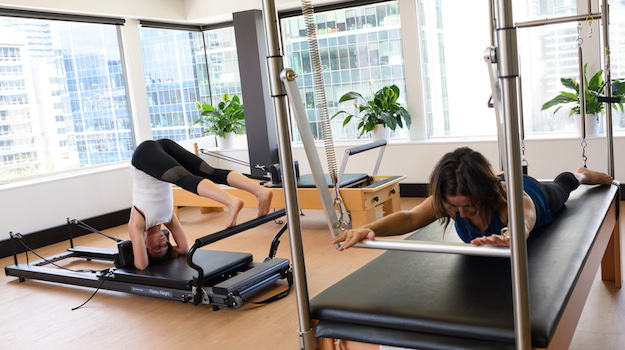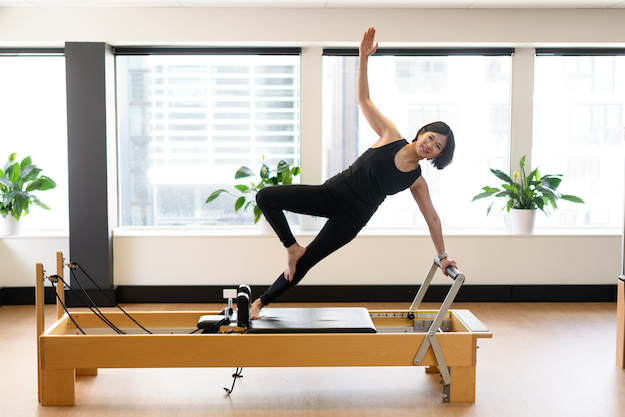Although completely different in intent, there are many cross-overs and benefits between Pilates and Yoga. Each lifestyle (or method) has proponents eager to tell you why their method is better than the other.
However, as with many things, deciding which will provide the most benefit is a complex combination of factors including: the particular body and personality in question; the various barriers to practice; and what the subject currently needs to help them get better, stronger, pain-free or simply find an improved sense of well-being.
Modern Yoga is wonderful for getting in touch with your true self. It will help you find what you require, both emotionally and spiritually. It allows you to observe and enhance the energy you put out and ultimately what you can receive. In many ways, the physical elements of Yoga take a back seat to the other elements of the practice including pranayama (breathing), meditation and (sometimes) chanting. The traditional forms of Yoga (Hatha, Iyengar and Ashtanga) all have very strict teacher certification programs to ensure that the method is taught as close to how it was originally intended as possible. Contemporary Yoga (heated, flow, powerflow, etc) focus more on the physical practice with a few elements of the ancient tradition for good measure.
Yoga is essentially a ‘led practice’ meaning that participants either know, or get to know, the movements and sequences progressively as they attend classes. The class is not about fixing your movement problems or pain and in many cases, Yoga can exacerbate pelvic and spinal conditions. If you love Yoga and want to find a movement practitioner that can help iron out your kinks, you will need to find one who is qualified beyond the base level and also takes private 1-on-1 sessions.
Pilates, on the other hand, has become all about ‘fixing’ in recent years. While some studios still offer ‘classical Pilates’ (unchanged from the source), it is the Contemporary Pilates approach which now seems to meet the most needs. Contemporary Pilates aims to reprogram musculoskeletal dysfunction and build strength in the body through breathing, deep stabilisation practice and, eventually, exercise in positions deemed as functional as possible.

Pilates at Melbourne Osteopathy Sports Injury Centre utilises this contemporary approach. Clients meet their instructor three to five times in a private setting where they learn the basics and undergo a postural screening. This helps the instructor understand which elements of the Pilates Method will be useful and which might be provocative or unsuited to the client’s needs. After these private sessions, the client is then free to move in to small group classes of no more than four. Each client works with their instructor on individual and customised session content. Our work focuses on getting you moving as dynamically as possible but in a way that is tailored to your movement dysfunction and pain. We take pride in transitioning our clients from a place of pain to one of freedom.
Although Pilates doesn’t have an in-built spiritual component, it has so many benefits beyond the physical. Many clients report a sense of calm and vitality, reduced stress and improved confidence. This all comes from the central message of the work, physical mastery.
The most important advice we can give is to do what you need to do at this point in time. You need to enjoy the method and be fully engaged in it to reap the rewards. For many of our instructors here at Melbourne Osteopathy Sports Injury Centre, that means Pilates first (to maintain strength and work on improving the physical state) and Yoga to help with all the other aspects of being human.
If you’d like to discuss how best to incorporate Yoga and Pilates into your program of physical and mental well-being, then please feel free to contact any of our expert Pilates team here at MOSIC.
- Phone: (03) 9939 1289
- Email: info@melbourneosteopathycentre.com.au

